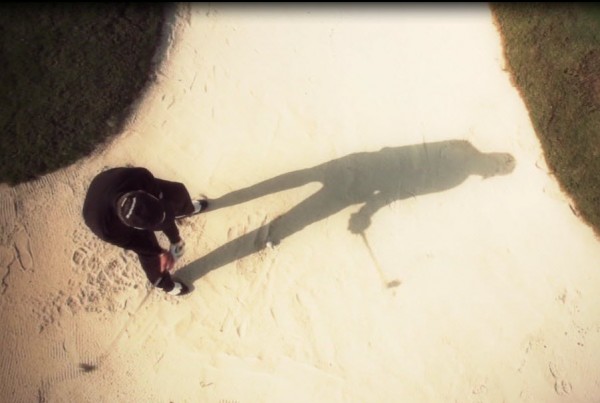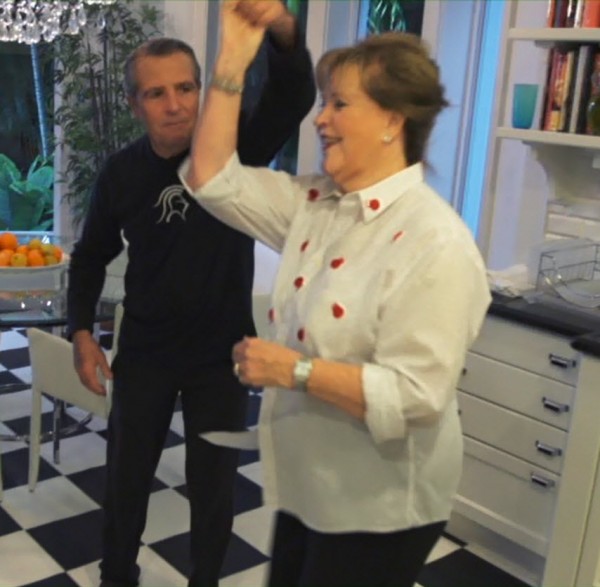Instruction
Review: Gary Player’s Instructional DVD Set: A Game For Life

It may not be fair to hold a legend in one aspect of life to a similar standard in another. When such a prominent figure makes an effort to repeat his/her achievements in another realm, there is a responsibility to assess performance fairly and thoroughly.
Gary Player, aka The Black Knight, and Revolution Golf have released a DVD set of instructional videos titled “A Game For Life.” A more appropriate label might be “A Fun Week With Gary: Learn What You Can.”
Most knights offer a noble effort and Player does no less. What he fails to do is winnow, organize and edit. What results is a sometimes confusing attempt to communicate his mind’s eye on the games of golf and life.
The discs are titled Sand Play, Scoring and Life and each focuses on specific elements of golf/life that he has deemed essential to improvement and enjoyment. As a successful tournament competitor, Player was known to be relentless when it came to preparation, but also promoted creativity in shotmaking. Player found no benefit in monotonously hitting shot after shot with the same technique traveling the same distance.
As such, theories of touch, feel and creativity permeate throughout this instructional series. Unfortunately, there seems to be too much creativity and a lack of consistency when it comes to the organization and execution of “A Game For Life.” The result is an unbalanced effort, albeit one with plenty of useful information and instruction.
Presentation
Remember how the excitement of opening your first DVD instructional set diminished when you realized it was only one disc, or an overwhelming ten discs? Too little or too much is detrimental to a program. With his set of instructional DVD’s, Player found the happy medium. A proper amount of information is critical to maintaining the attention of the viewer and maximizing retention of the material. If the presentation is offered in a welcoming way, the student will return to the DVD time and again, seeking the next useful point of improvement. This is where the instructional series excelled.
“A Game For Life” comes in a compact, all-black box with nothing cumbersome about it. The discs are stored within, in accordion-fold sleeves for convenience. The first disc includes the sections Sand Play and Practice; the second contains Short Game and Putting; the third holds Fitness and the Player Family Diet, followed by a brief, sit-down Interview.
Something that Gary Player offers that few can match is a combination of swing knowledge and competitive success. This comes across best in his section on putting. Player is, at heart, a feel player. He is most accurate, therefore, when explaining the element of the game that is most centered on feel: rolling the ball across a green. What he is not is a day-to-day teacher who has logged hundreds of thousands of hours watching the flawed swings of students, both in person and on video. His knowledge of full-swing technique is not communicated with precision, but when it comes to putting and sand play, it’s not about pure technique. It’s about repetition and feel and creativity. At the heart of the artist, you will find these three critical elements.
Execution
There will come a time when the voice of Peter Kessler jumps the shark, but for me, that just hasn’t happened yet. During the 1990’s and 2000’s, when Kessler’s distinct timbre was associated with The Golf Channel, his presence in a supporting or promotional role was quite beneficial. Now that he is no longer associated with that network, one must make an effort (podcasts, for example) to hear him. For now, I consider him to be a knowledgeable, mildly-elder statesman of the game and as narrator of this DVD series, a benefit to Player’s efforts.

Player may or may not be thrilled to have so much emphasis placed on his ability to escape bunkers, but the seasoned professional that he is, Player begins the series with instruction on how to play from green side bunkers. Player offers this nugget: he knew that major-championship flags were typically tucked behind or next to bunkers. He felt that you had to be aggressive in order to win major championships, and that meant flirting with, and often hitting, bunkers. Therefore, Player practiced sand shots for two hours each morning before work and became who many consider the greatest bunker player of all time.
Every nuance of Player’s approach to sand play connects directly to the single word: Aggression. Player wants a wide, stable strong stance. He wants an early and strong cocking of the wrists. Most important, he demands acceleration through the sand, so that there is no trace of deceleration. The great irony is that the average golfer is so timid in the bunker, so afraid of the relationships between the club, the sand and the ball, that he invariably decelerates. The notion of aggression is transferable to all other facets of the swing, so Player’s revelation in this segment of the DVD series should not be taken lightly.
At the 18-minute mark of the Short Game segment, Player pauses to tell an anecdote on Bobby Jones. He mentions that he wanted the secret to making birdie on the third hole at Augusta National Golf Club. Jones answered that the hole was designed to be parred, not birdied. Player rolls this nugget into the proper way to play the most difficult of bunker shots: the downhill lie. His advice is to take your medicine, play for bogey and avoid the larger number.
Around the 21-minute mark of the Short Game segment, he exchanges his pitching wedge for a seven-iron and continues to hit explosion shots. Therein lies the greatest lesson of this disc: never lose your childlike sense to learn and to create. So many of us restrict our options to avoid embarrassment, disallowing ourselves to accept a challenge and have fun with the game.
Player has no fear whatsoever of embarrassing himself. Whether he is captured imitating the sound effects of his favorite martial arts film, in order to accentuate his perceived speed and strength, or dancing with his wife to the strains of Elvis Presley singing “Teddy Bear,” Player never forgets to keep life and golf entertaining.
He also perceives himself as a man on a mission.
With nothing else to prove in championship competition, his stump is aimed directly at obesity and overall lack of awareness of healthy eating and fitness. For every instance he says “We’re not preaching, but…” he preaches a little louder, a little longer. This is not destructive preaching, if you listen hard enough. Gary Player wishes to share what he has learned over time, but he is acutely aware that most folks need a kick in the pants to get the engine started.
Picayune details
Just as successful instruction finds a proper balance between too much and too little, it also seeks equilibrium between too general and too specific. When poor-to-average golfers are asked to do too much with too much precision, the result is frustration and abandonment of the method.
An example of this picayune instruction comes about nine minutes into the Sand Play section. Player is discussing the benefits of hitting the sand one-inch behind the ball for over two minutes when Kessler asks, “is it the leading edge or is it the bounce” that strikes the sand behind the ball. The difference between the leading edge and the bounce is less than half an inch. For the best amateurs and aspiring professionals, it’s a valid question. For the other 98 percent of us, let it go.
Fortunately for us, Player decries the minutia and demands that we avoid paralysis by analysis. One disc later, in the Short Game section, Player begins with the two most advanced shots. Instead of building the confidence of the golfer who has purchased the discs, Player spends too much time discussing and hitting the shots, then reveals how long (a month!) it will take to master one shot or the other.
At the 14-minute mark, Player discusses using a pitching wedge on uphill-sloped bunker shots. Kessler asks if he is swinging into the slope or along the slope. Player replies, “into the slope,” but I’m not so sure. His shoulders, hips and swing path suggest the opposite. If he were to swing into the slope, he would bury the wedge into the sand. In this instance, word choice is poor and a bit of editing would serve the paying public.
No one but a fool believes that every shot is struck perfectly by an instructor. A top touring professional is more likely to hit shots perfectly, but not all of them. In the first five minutes of the Short Game section, Gary Player gives us a sample of high chip shots hit to a green with no trouble in front.
Why he isn’t running them up isn’t the point. What matters is this: he allows us to see his mistakes and I applaud that decision. However, the producers got a little careless with the editing on this one. On the final shot, the cameraman makes an effort to catch the ball in his camera shot as it grabs the green, but the ball is nowhere to be seen. Later on, he drops to a 9-iron and tries to hit pitch-and-run shots. With all the green to work with, he bangs his first two shots past the hole, yet somehow defines them as successful. I loved his positivity despite the clearly misjudged chip shots.

Player, long before Tiger Woods was born, espoused the notion that fitness and golf would go hand in hand. Since his 5-foot 7-inch frame gave him a bit of a handicap against his taller opponents, Player reasoned that sit-ups, push-ups and what would later become a full work-out routine would do much to aid him in his quest toward championships.
Throughout the fitness section, Player discusses the Popeye model: thin neck, flat chest and upper arms, huge forearms and thin waist. Oblivious to the inattainability of this model (the equivalent of the Barbie physique for women), Player repeats the importance of certain exercises over others, or over nothing at all.
The Black Knight is also the King of Hyperbole. He references “hundreds” and “thousands” of repetitions a day, a week, of abdominal and weight-bearing exercises, but never defines a program of how many, how often, how much weight. This section of the set could also benefit from a bit of editorial tightening.
A brief synopsis
Gary Player reveres teaching professionals. He comments throughout the DVD series on how he learned his craft in the pro shop, on how amateurs should go to their local professional for a lesson, on course management or green reading, but definitely not merely on swing mechanics.
Ironically, I suspect that his own ability to teach might have been limited to the creative, feel players. When Player discusses elements of the game that demand personal touch, he is so supportive of individuality that the type of player that responds to an open canvas, will feel comfortable with him. When he strays into areas of angles of descent, degrees of rotation and the like, the type of fodder that mechanically-oriented students of the game eat up, Player is not only uncomfortable, but at times, inaccurate.
Does that make the DVD series “A Game For Life” not worth a purchase? Absolutely not.

During the putting segment, Player indicates that these lessons will be around 100 years from now, when the game is vastly different. Gary Player is one of the great champions of the game and what he says and does are invaluable to students of the game. Don’t take everything literally, use your own personal touch to absorb what will best help you, and your time spent watching and working with Gary Player will be as worthwhile as the super juice he drinks every morning.
- LIKE16
- LEGIT0
- WOW0
- LOL0
- IDHT0
- FLOP3
- OB0
- SHANK0
Instruction
Clement: Laid-off or perfect fade? Across-the-line or perfect draw?

Some call the image on the left laid off, but if you are hitting a fade, this could be a perfect backswing for it! Same for across the line for a draw! Stop racking your brain with perceived mistakes and simply match backswing to shot shape!
- LIKE0
- LEGIT0
- WOW0
- LOL0
- IDHT0
- FLOP0
- OB0
- SHANK1
Instruction
The Wedge Guy: The easiest-to-learn golf basic

My golf learning began with this simple fact – if you don’t have a fundamentally sound hold on the golf club, it is practically impossible for your body to execute a fundamentally sound golf swing. I’m still a big believer that the golf swing is much easier to execute if you begin with the proper hold on the club.
As you might imagine, I come into contact with hundreds of golfers of all skill levels. And it is very rare to see a good player with a bad hold on the golf club. There are some exceptions, for sure, but they are very few and very far between, and they typically have beat so many balls with their poor grip that they’ve found a way to work around it.
The reality of biophysics is that the body moves only in certain ways – and the particulars of the way you hold the golf club can totally prevent a sound swing motion that allows the club to release properly through the impact zone. The wonderful thing is that anyone can learn how to put a fundamentally sound hold on the golf club, and you can practice it anywhere your hands are not otherwise engaged, like watching TV or just sitting and relaxing.
Whether you prefer an overlap, interlock or full-finger (not baseball!) grip on the club, the same fundamentals apply. Here are the major grip faults I see most often, in the order of the frequency:
Mis-aligned hands
By this I mean that the palms of the two hands are not parallel to each other. Too many golfers have a weak left hand and strong right, or vice versa. The easiest way to learn how to hold the club with your palms aligned properly is to grip a plain wooden ruler or yardstick. It forces the hands to align properly and shows you how that feels. If you grip and re-grip a yardstick several times, then grip a club, you’ll see that the learning curve is almost immediate.
The position of the grip in the upper/left hand
I also observe many golfers who have the butt of the grip too far into the heel pad of the upper hand (the left hand for right-handed players). It’s amazing how much easier it is to release the club through the ball if even 1/4-1/2″ of the butt is beyond the left heel pad. Try this yourself to see what I mean. Swing the club freely with just your left hand and notice the difference in its release from when you hold it at the end of the grip, versus gripping down even a half inch.
To help you really understand how this works, go to the range and hit shots with your five-iron gripped down a full inch to make the club the same length as your seven-iron. You will probably see an amazing shot shape difference, and likely not see as much distance loss as you would expect.
Too much lower (right) hand on the club
It seems like almost all golfers of 8-10 handicap or higher have the club too far into the palm of the lower hand, because that feels “good” if you are trying to control the path of the clubhead to the ball. But the golf swing is not an effort to hit at the ball – it is a swing of the club. The proper hold on the club has the grip underneath the pad at the base of the fingers. This will likely feel “weak” to you — like you cannot control the club like that. EXACTLY. You should not be trying to control the club with your lower/master hand.
Gripping too tightly
Nearly all golfers hold the club too tightly, which tenses up the forearms and prevents a proper release of the club through impact. In order for the club to move back and through properly, you must feel that the club is controlled by the last three fingers of the upper hand, and the middle two fingers of the lower hand. If you engage your thumbs and forefingers in “holding” the club, the result will almost always be a grip that is too tight. Try this for yourself. Hold the club in your upper hand only, and squeeze firmly with just the last three fingers, with the forefinger and thumb off the club entirely. You have good control, but your forearms are not tense. Then begin to squeeze down with your thumb and forefinger and observe the tensing of the entire forearm. This is the way we are made, so the key to preventing tenseness in the arms is to hold the club very lightly with the “pinchers” — the thumbs and forefingers.
So, those are what I believe are the four fundamentals of a good grip. Anyone can learn them in their home or office very quickly. There is no easier way to improve your ball striking consistency and add distance than giving more attention to the way you hold the golf club.
More from the Wedge Guy
- The Wedge Guy: Golf mastery begins with your wedge game
- The Wedge Guy: Why golf is 20 times harder than brain surgery
- The Wedge Guy: Musings on the golf ball rollback
- LIKE88
- LEGIT14
- WOW6
- LOL1
- IDHT0
- FLOP4
- OB1
- SHANK8
Instruction
Clement: Stop ripping off your swing with this drill!

Not the dreaded headcover under the armpit drill! As if your body is defective and can’t function by itself! Have you seen how incredible the human machine is with all the incredible feats of agility all kinds of athletes are accomplishing? You think your body is so defective (the good Lord is laughing his head off at you) that it needs a headcover tucked under the armpit so you can swing like T-Rex?
- LIKE0
- LEGIT3
- WOW2
- LOL0
- IDHT0
- FLOP0
- OB0
- SHANK2
-

 19th Hole2 weeks ago
19th Hole2 weeks agoJustin Thomas on the equipment choice of Scottie Scheffler that he thinks is ‘weird’
-

 19th Hole2 weeks ago
19th Hole2 weeks ago‘Absolutely crazy’ – Major champ lays into Patrick Cantlay over his decision on final hole of RBC Heritage
-

 19th Hole3 weeks ago
19th Hole3 weeks agoTwo star names reportedly blanked Jon Rahm all week at the Masters
-

 19th Hole3 weeks ago
19th Hole3 weeks agoReport: LIV Golf identifies latest star name they hope to sign to breakaway tour
-

 19th Hole3 weeks ago
19th Hole3 weeks agoNeal Shipley presser ends in awkward fashion after reporter claims Tiger handed him note on 8th fairway
-

 19th Hole2 weeks ago
19th Hole2 weeks agoBrandel Chamblee has ‘no doubt’ who started the McIlroy/LIV rumor and why
-

 19th Hole1 week ago
19th Hole1 week agoLET pro gives detailed financial breakdown of first week on tour…and the net result may shock you
-

 Equipment3 weeks ago
Equipment3 weeks agoJason Day on his recent switch into Srixon ZX5 and ZX7 Mk II irons




















JC
Aug 8, 2015 at 10:36 am
Not sure what w had in mind, but most pros teach a very technical grip position, take away, swing plane, release and weight transfer kind of method and then provide drills to help your very out of shape body do that. That method is great for some pros who take the time to groove their swing, but most amateurs hit only the 5 to 10 dozen balls a week it takes to play a round or two and maybe a small bucket at the range, not the hundreds per day it takes to properly groove a swing. For us guys, the keep it simple and get in shape method that Player espouses probably is the best.
Pingback: Give Me One Minute | God & Golf Tee-ology
Brad
Aug 4, 2014 at 6:56 am
I own this DVD series. The reviewer has given it a pretty accurate and fair review. There is a lot of good stuff. Bottom line, Gary Player walks his talk, whether it be the various shots he talking about or his lifestyle. I learned a lot and would recommend the DVDs
Ronald Montesano
Aug 3, 2014 at 11:35 am
What I’ve found with any successful competing professionals (and musicians, actors, et al) is that they can DO IT, but they cannot communicate how they DO IT. As a result, they get frustrated when we cannot DO IT and they walk away. A teacher knows that it is not always (if ever) about getting IT all the way done. Instead, chipping away at IT is the long-term goal of a proper instructor.
Pingback: Review: Gary Player’s Instructional DVD Set: A Game For Life | Spacetimeandi.com
w
Aug 2, 2014 at 3:56 pm
i think 90% of “teaching pros” teach golf the wrong way.
THE Way
Aug 3, 2014 at 1:43 am
Please be more specific…. which way is the wrong way? Which way is the right way.